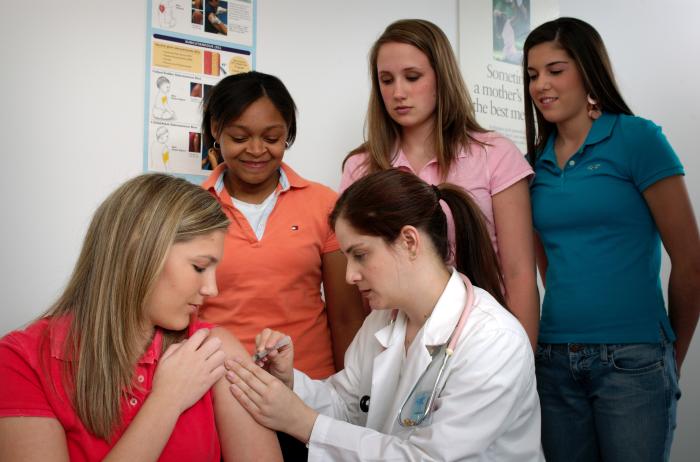Submitted by Thurston County Public Health
This time of year, we tend to see an increase in the number of people diagnosed with pertussis, also known as whooping cough. Pertussis is a highly-contagious respiratory illness that spreads when a person with the disease coughs or sneezes. One person with pertussis can infect between 12 and 15 others.
The illness starts with mild cold symptoms, followed by a cough 4 to 5 days later. The cough can become severe, causing children to vomit or have difficulty breathing, with the characteristic “whoop” sound in children with severe illness. The cough can last for weeks or months and can result in broken ribs and ruptured blood vessels.
Whooping cough affects people of all ages, but is most serious in infants, especially those too young to get vaccinated or who are not fully protected. Infants with whooping cough may have trouble feeding and breathing, and may turn bluish from a lack of oxygen. Roughly half of infants under one year old who get whooping cough are hospitalized, and 1 percent of those hospitalized with the disease die from it.

Whooping cough continues to circulate in our community—unlike measles it has never been eradicated in the U.S. We see peaks in pertussis every few years. In 2012 Washington State had an epidemic, with nearly 5,000 cases reported statewide; 136 of those cases were in Thurston County. As of November 14, 34 cases of pertussis have been reported in Thurston County during 2016, compared to 50 cases during the same time period last year. The age groups most affected this year are school-aged children and teens.
Vaccinations and good health habits are our best tools for preventing pertussis. People who are vaccinated may still get whooping cough but they will have milder symptoms and shorter illnesses, and are less likely to spread the disease to others.
Most children are immunized during their infancy and pre-school years, and are protected while they are the most vulnerable. Currently, it is recommended that pregnant women get vaccinated against whooping cough during each pregnancy to protect their newborn baby until the baby can get their own vaccinations. Babies get their first dose of whooping cough vaccine at two months of age, and need a series of five shots to be fully protected. Since babies in their first year of life are too young to get all five doses of vaccine all at once, it is important that everyone else around them is vaccinated.
Protection from pertussis vaccine wears off over time, leaving older children and adults susceptible to the illness. Adolescents and adults typically get much milder cases of whooping cough, but they can still be infectious. This can make it difficult to stop the spread of the disease and underscores why it is so important that we work to prevent the disease among all ages.

Anyone in contact with infants, toddlers, and school-age children should be immunized against whooping cough. The vaccine for children is called DTaP, and the booster vaccine for adolescents and adults is called Tdap. The national Advisory Committee on Immunization Practices recommends Tdap vaccination during the third trimester of each pregnancy, even for women who were previously vaccinated. All other adults who have not already had a Tdap vaccination should receive one dose of Tdap. Adolescents should receive a dose of Tdap at 11 to 12 years of age.
The four most important ways to prevent the spread of pertussis, as well as many other illnesses, are:
- Keep yourself and your family current on recommended vaccines
- Wash your hands frequently
- Cover your nose and mouth when coughing and sneezing
- If you or a family member are sick, stay home from work, school, and doing errands
If you or your child has a severe cough, or one that lasts longer than a week, please see your family health care provider for an evaluation.





















































